List of Authors
>>About this blog
Recent blog post
|
[Shiba Inu]
September 29, 2016 18:00
Do you know the event called "Kimono Salone"?
This is a major event in kimono and kimono fashion, which has been held mainly in COREDO Muromachi since 2012. Last year, the number of visitors was more than 10,000. What is the secret of its popularity...Whatever you say, the overwhelming gorgeousness that you can see! And it's a free event!
This year's event will be held twice in September and October. The September meeting has already ended, but I would like to introduce it briefly.
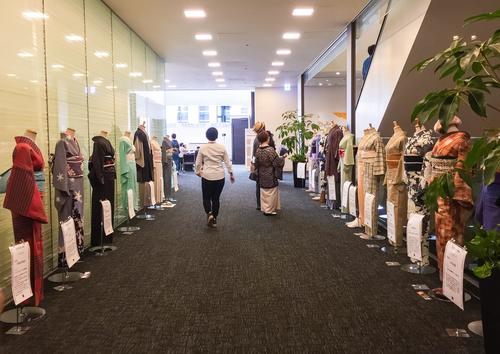
"Kimono marche" was held in YUITO, next to COREDO. There were about 75 kimono dealers who participated, and kimonos worn by each participating store elaborately at the entrance are slurried.
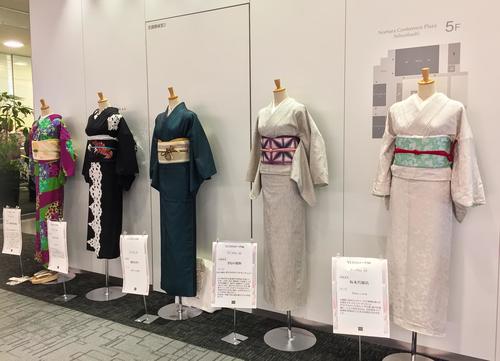
It is exhibited everywhere in the venue.
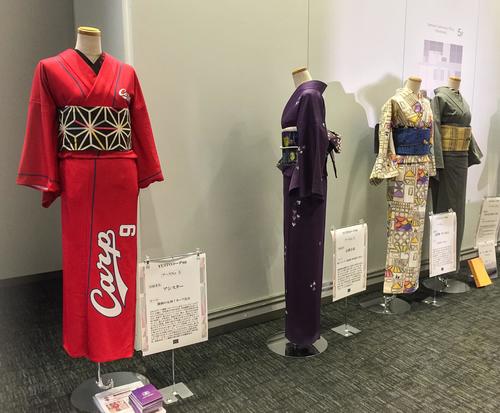
That team's yukata is a hot topic! There is also a back number.
The kimono on display is also popular. All participants can vote. It's also fun to find your favorite kimono and dressing!
At the store booth, all types of kimono and kimono goods are sold, from long-established stores to up-and-coming young people.

There is a convenient half-collar tape or kimono hanger that can be stored with closetts, and a stunning Yuzen dyeing that makes you feel like you are in the museum just by looking at it. There is also a special exhibition in Kyoto!
There is a demonstration corner of craftsmen in the venue.

There is also a sales corner for kits that can easily tie Japanese hair. You can actually tie Japanese hair (charged).
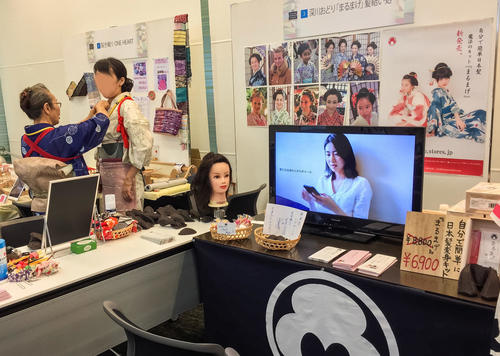
At the event corner, popular dressers gave tips on dressing and care courses, talk shows by popular cultural figures, stage for Nihon Buyo and shamisen, and even fashion shows. All of these can be viewed for free.
In addition, there is a corner where you can compare delicious Japanese sweets and Japanese sake drinks....。 Of course, there is also a kimono rental!
===========
This is the introduction of "Kimono Salone" in September.
October will be held at COREDO for three days, 28th (Fri), 29th (Sat) and 30th (Sun). The main item is coordination of 100 kimonos and a local kimono fashion show. There are plenty of other fun projects. Details have not been announced yet, but please look forward to it because it is a very exciting event every year. The venue, COREDO Muromachi, is directly connected to the station, so it is convenient to go out and safe even on rainy days.
For more information, please visit our website. → [Kimono Salone in Nihonbashi]
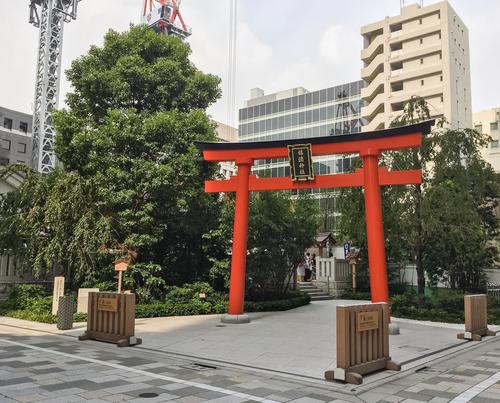
When you go out, be sure to visit the neighboring Fukutoku Shrine. It is a shrine where lottery (lottery) has been held since the Edo period, and it is still a popular shrine that is said to have a spiritual experience in lottery. There is also a sale of "lottery bags" for storing lottery tickets.
[Asunaro]
September 27, 2016 14:00
It's a long rain in autumn. I went to Tsukishima in the middle of the clouds.
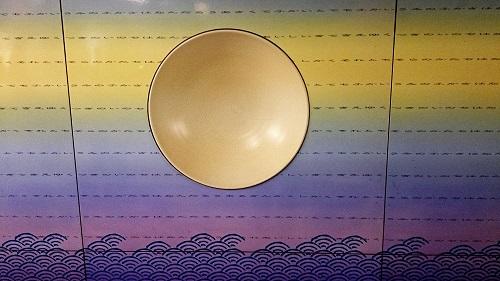
< Tsukishima Station on the Oedo Line> Tsukishima Station on the Oedo Line>
Tsukuda Island and Tsukishima are located in the city center and are not miraculously affected by war.
That's why I'm leaving the houses in the early Showa era.
It is an old town surrounded by skyscrapers forested on the adjacent land.
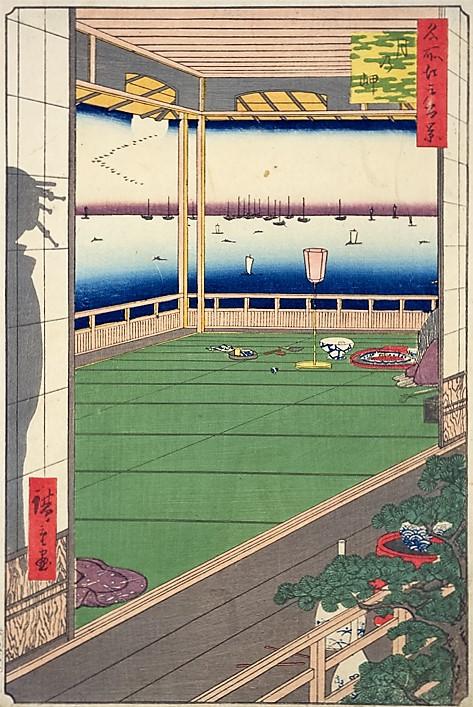
The name of Tsukishima is "Tsuki no Cape" located in Tokyo Bay.
It is said that it was named after a famous moon viewing spot.
<Hiroshige Utagawa Famous Place of Edo Hundred Views of Tsukitsuki Cape>
I couldn't see the moon this time because the conditions were not met.
There will be a view of the moon viewing that has not changed.
"In a world where everything is changing
I wonder if it's the moon to sit in the same shade."
Instead, like Tsukishima, look like the moon? I looked for it.
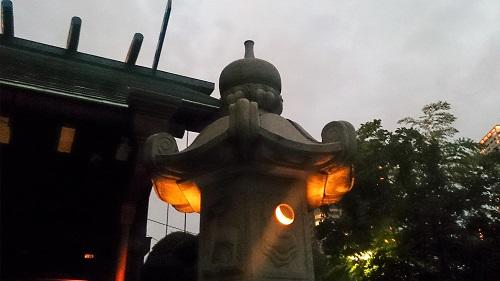
< Lantern of Sumiyoshi Tsukuda-jinja Shirine> Lantern of Sumiyoshi Tsukuda-jinja Shirine>
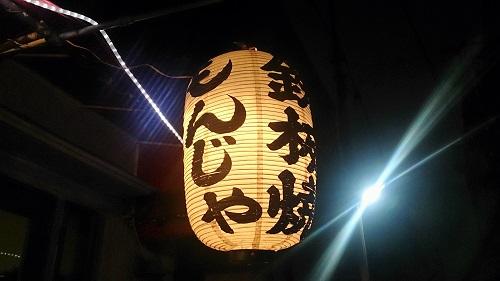
< Japanese lantern near Nishinakadori> Japanese lantern near Nishinakadori>

< Mont Blanc of Tampltan> Mont Blanc of Tampltan>
Enjoy not only Monjayaki but also night view, downtown atmosphere, and history.
The Tsukuda / Tsukishima area where you can do it. Please try to stretch your legs.
◆A famous place in Edo where you can enjoy Nishiki-e.
◆Tsukishima PATISSERIE Tant Pour Tant
◆National Astronomical Observatory of Japan (NAOJ)
[CAM]
September 25, 2016 09:00
> Shinroku Hazama was separated from his father and brother, and together with nine comrades, was housed in the Kamiyashiki of the Chofu clan in Azabu Higabo. ・・ ・ ・ ・ ・ ・ ・ ・ During the strict caution, Shinroku and others, who spent a calm year-end and New Year holidays, were offered a stomach on February 4.
The Chofu clan side considers the stomach to be a ritual, and makes proposals to the Shogunate officials.
[The side difference of the stomach, wrap the fan in paper and prepare the ten bottles ...] ("Mori family Record")
Shinroku's stomach was the ninth. While clansman Era Kiyokichi set up a sword, Shinroku took action to hit his surroundings.
{Ma Shin-Rokuro does not take off his skin, places three treasures (treasures) in front, takes a side difference, and sticks to his belly ...} ("Mori family Record")
It seems that the last appearance of Shinroku was astonishing for the gallery, who thought that the Akaho Nanji and others would be intercepted in a form similar to a fandom without cutting the abdomen directly. After a fierce and intense stomach, Shinroku Hazama scattered at the age of 24.
>・ ・ ・ In the evening, the bodies of nine Nanji other than Shinroku were transported to Sengakuji Temple. ・・・・・・
It is believed that the Chudo couple (Shinroku's older sister and wife) buried the body of Shinroku in the cemetery of Tsukiji Honganji, which was also the Bodaiji Temple.
>At Sengakuji Temple, as well as 45 Oishi built-in assistants who transported their bodies, Shinroku Hazama also gave posthumous Buddhist name and built tombstones together.
>Over time, on April 8, 1928, such an article appeared in a corner of the Asahi Shimbun.
{The transfer of the remains of the Gishi
The Tokyo City Park Division has decided to apply for permission to transfer the grave of Ako Gishima Shin-Rokuro at the graveyard of Tsukiji Honganji to Takanawa Sengakuji. In other words, the grave of Shin-Rokuro now is simply a monument, and the remains are buried in Tsukiji Honganji.
>The details after that were introduced in detail in the Asahi Shimbun on December 15, 1929.
{The remains of the lawyer are missing
A memorial service for Shin-Rokuro during a strange connection on the day of the debate.
・・・・・
On February 13, 1929, the graveyard of Honganji was dug back for land readjustment, and ... It was dug back, but it came out from under the tombstone was similar to the bone of a young warrior Two urns that are not different, ...
The others were buried at Sengakuji Temple as will, and could serve you for a long time after his death, but Shin-Rokuro would not be floated if there might be remains, so it became memorial service on the 14th.}
>At present, it can only be confirmed by the slightly remaining old photographs, but the tomb of Shinroku at the time of the early Showa era was away from the burial position of the Genroku era.
Eventually, the remains of Shinroku Hazama were not found, and then the tombstone was moved to its current position.
However, the tomb and the remains that returned to the soil are close to the land where the house was located at the time of the incident, where the lord Naganori Asano was born. The only one Nanji Akaho is a strange place from his comrades, and may have continued to serve as a clan residence and lord's samurai guard in a long time ago.
Although not mentioned in Monoshiri Encyclopedia, such a drama was hidden in Peace pagoda in the precincts of Honganji Temple.
[Slow of Satsuki's Koi]
September 24, 2016 14:00
Skip "tea shop", "purple", and "Nishiki-e".
I'm in a fight against "fire" and "fire"
Edo is one of the largest cities in the world, and the houses were wooden and dense, so it seems that there were many fires. However, in "Kidai Shoran", a house with a tiled roof is depicted, and although it is wooden, I think that there was awareness of fire prevention.
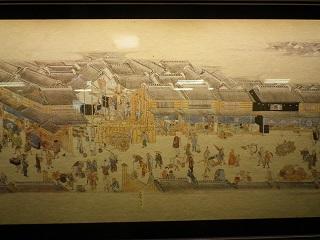 ・"Kyodai Shoran" We have a contract here. It will be a tiled roof. The area around it is a tiled roof. ・"Kyodai Shoran" We have a contract here. It will be a tiled roof. The area around it is a tiled roof.
In fire prevention measures, Minamimachi magistrate Ooka Echizen Mamoru Tadayoshi received the order of Yoshimune Tokugawa, and launched 48 sets of town fire extinguishing after 47 sets. There are no groups, groups, groups, groups, and groups in Iroha ... It seems that "he" is fart, "hi" is fire, "ra" is a hidden word, and "n" represents the end (I didn't know the group).
The dressing of the group is shaped like a kutashi and a masu, but it seems that the fire is "keshi-masu".
The timber wholesaler was initially located in Nihonbashi, and Koba, a timber storage area, was moved away from Edo Castle every time a fire broke out and moved. The Great Fire of the Meiryaku era, which is said to be the largest, Edo central keep was burned down at this time. Even now, the stone wall still has blackened.
"A fight,"
There must have been a lot of quarrels. However, Kido was set up as seen in "Kidai Shoran", and it was closed at night, so the security seemed to be good. It is Kido Banya that manages this Kido, and in addition to opening and closing Kido, it seems that he also checked passers-by and fire.

・"Kidai Shoran" There is also a banya here.
It seems that it is "middle" and vigorous.
"Iseya,"
There must have been many shops with the name "Iseya". It is said that the town of Edo stands out only the signboard of Iseya.
One of the long-established bonito specialty stores with the deepest history in Nihonbashi, "Ninben", founded in 1699 1699 The roots are Ise merchants, and the trademark "I" is the name of the trademark "I" at the time of its founding.
Bonitobushi is one of the essential things to Japanese food culture, but recently we established a bonito flake factory in France and started production. It seems to be sold to European countries. It is said that it is difficult to export due to EU regulations and transportation costs, so it has decided to make local production.
A dog's lie in Inari
[CAM]
September 21, 2016 18:00
In the precincts of Tsukiji Honganji Temple, there is a Peace pagoda of Shinroku Hazama, one of the Akaho Namishi who broke into Kira's residence ("Monoshiri Encyclopedia"). However, it was doubtful why only the Peace pagoda of Shinroku Hazama was located in Tsukiji Honganji. In this regard, in the January 2016 issue of the magazine "History Street", writer Shigero Ito wrote a paper entitled "The fierce stomach shown by the ninth Gishi Shinroku Hazama". It seems to be a bit difficult to obtain (not stored at the Central City Library), so I would like to introduce only the main points below.
>Speaking of Akaho Nanji's burial ground, everyone thinks of Sengakuji Temple in Minato-ku, Tokyo. After the revenge, 46 ronins except Kichiemon Terasaka, who were away from his comrades, were detained in the four daimyo Edo clan residences, and died on February 4 of the following year by the order. Each body was transported to Sengakuji Temple, the Bodaiji Temple of the Asano family in Edo, and was buried.
However, there is only one Akaho Nanji who was not sent to Sengakuji after his stomach. That was Shinroku Hazama.
>At present, six tombstones are lined up along the northeast side of the precincts of Honganji Temple. There is little to no other than those who go on a historical walk. Honganji used to have a wide grave area in the northwest, southwest of the precincts of main hall. In 1936 (1936), this cemetery was relocated to Wadabori in Suginami-ku, and at that time, a few tombstones of a celebrity were left at Tsukiji.
>The Akaho clan's residence was located here for 44 years until it was relocated from Kamisakurada to Tsukiji in 1657, and was requisitioned by the Shogunate due to Naganori's blade wound incident. Kamiyashiki, which was located in a place that encompasses the current entire St. Luke's College of Nursing and half of the site of Tate Akashi Elementary School in Chuo-ku, has a total tsubo area of more than 8,970 and a total area of the building is 3,335 tsubo. It was here that Naganori was born in 1667 (1667).
Based on these traces, the Akaho Nanji and others stopped by this land, which was the Edo Kamiyashiki of the Echizen Obama Domain after requisition to the Shogunate, and reported their achievements to the god of the land of the lord's land. .
[Wind in all directions]
September 21, 2016 14:00
On September 17, an event was held around Nihonbashi, where I served as a guide, as the typhoon hit the Japanese Islands in a row and the weather continued unseasonable day. Contrary to the forecast on this day, there were clouds, but the weather was fine and three hours passed quickly. The highlight of the event is "Nihonbashi Mitsukoshi Main Store", which was designated as an Important Cultural Property this year.
The name guide of the female manager known to the people in the know began with the history of Mitsukoshi, a memorable day from those who participated in a series of things they did not know, such as pipe organ performances, the scenery of the large hall with a blowout, fossils of huge ammonites, etc. I told you. Why don't you go to the Nihonbashi Mitsukoshi Main Store, which has been designated as an Important Cultural Property again?
Note) In-store tours are available on the second Saturday of every month from 11:30 to 14:30 to 2 times free of charge Lion Entrance Information Center
This time, I would like to introduce "Nihonbashimurocho Honen Manpuku" who was used as a lunch place for this event.
Did the storehouse built facing the Nihonbashi River use the motif of the storehouses on the fish shore that were in the land of the river? The atmosphere is good from the entrance and the mood is uplifting.
We went up to the second floor and had lunch on the terrace seat along the river. There was a giboshi on the stairs. I'm sure.
Combined with a cruising boat traveling around the river, it was a meal while enjoying the Nihonbashi brand.
Word of mouth information is often used to know the shop. In Chuo-ku, information from correspondent blogs will be added further.
When I decided on a lunch place, I was worried about where to set a restaurant that would accept a large number of 20 people on Saturday, but Mr. Manfuku Toyoto was introduced. The event on this day broke up after meals.
I tried an interview to recover the inferior students provided by blogs on a daily basis. The interview is on the first floor with impressive oriental lamp-style lighting.
And I was surprised. The manager came to a seat and started talking, "I have a study session today."
When I heard the story, it was called "Honen Manfuku Juku" once a month, and a study session was held with 30 people with instructors for each theme, and this is the 32nd time this time. In addition, once every three months, irregularly, 100 people gather from 7:30 am to 1 o'clock in the morning to hold a study session while making food using seasonal ingredients from all over the country. This was implemented 12 times, and the next time it was considered for the end of the year.
It seems that he is working with an organization based in Nihonbashi.
Before I asked, "What is a popular menu?", I decided to ask about the aspirations of the shop.
Manfuku Toyoto aims to be a restaurant that transmits cultural information through Japanese food while using not only some long-established ingredients in Nihonbashi but also ingredients that are thoughtful from producers nationwide.
From 7:30 in the early morning to 100 people, including those before commuting, can't help but feel a passionate feeling. Inside the store, there is also a corner where you can sell natural fermented products (soy sauce, miso, etc.) and long-established products from Nihonbashi.
The shop is open from 11:30.
It was a shop that hoped that Nihonbashi, the starting point of Gokaido and the starting point of Asia Highway, will continue to send a lot of news.
http://www.hounenmanpuku.jp/
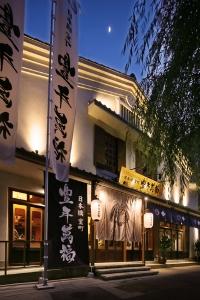
Store Light Up

Store-treated "Kami Shigeru"

Located in the back of the terrace seat on the second floor, the Nihonbashi Pier.
|
Links
|












 ・"Kyodai Shoran" We have a contract here. It will be a tiled roof. The area around it is a tiled roof.
・"Kyodai Shoran" We have a contract here. It will be a tiled roof. The area around it is a tiled roof.




